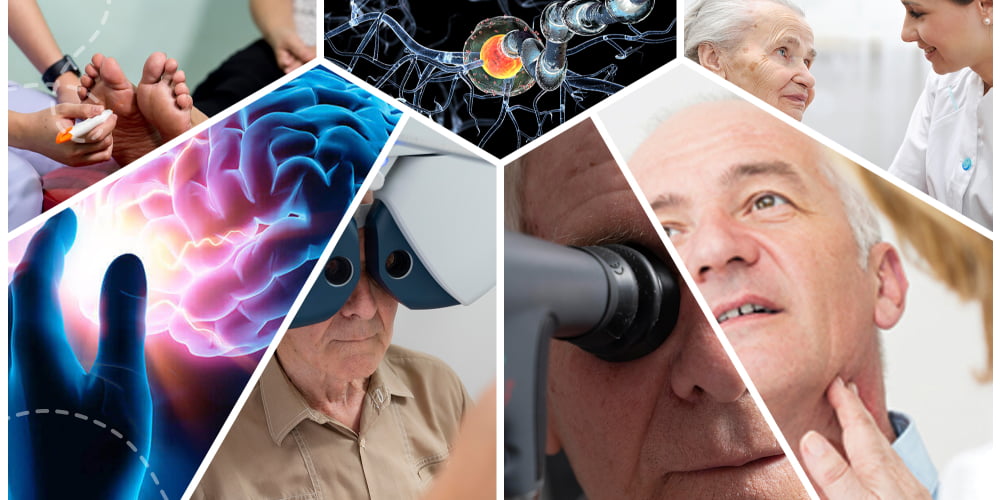Balo disease is a rare variant of multiple sclerosis expressed in the disruption of the normal functioning of neurons in the human nervous system. This pathology is characterized by a complex course, like most other diseases associated with disruption of the brain and central nervous systems, such as Marburg fever or Devic’s disease. The white matter in the human brain begins to break down, resulting in concentric curls, knots, and rings.
Medical evidence shows that young people are mostly affected by this disease. Unlike the usual forms of sclerosis, the pathology is accompanied by an acute form of the course and progresses rapidly.
The pathology was discovered and described in 1927 by the Hungarian pathomorphologist Joseph Balo. In one of the patients, Joseph Balo discovered destroyed areas of the brain with white matter that resembled concentric layers and did not damage the axons. First, Joseph Balo gave the disease the name “periaxial leukoencephalitis.” However, in the future, the name “Balo’s concentric sclerosis” or simply “Balo’s disease” was fixed in the scientific and medical literature.
Balo Disease Symptoms
In the scientific literature, there are registered cases when concentric sclerosis proceeded without any symptoms and was diagnosed only by autopsy.
In most cases, patients with this disease describe it as an illness that they got after suffering an acute infection or severe stress. Balo concentric sclerosis develops with a wide range of symptoms, and patients have problems with the brain. Brain abnormalities can manifest in headaches with nausea and epilepsy. In rare cases, asthenia may appear.
Symptoms often include signs of damage to the central nervous system and its structures. When examining patients with Balo concentric sclerosis, it turns out that, most often, the symptoms include:
- destruction of the pyramidal tracts, which is observed in a decrease in muscle strength;
- loss of sensitivity and in the foot reflexes;
- there is a disruption in the work of the parts of the brain responsible for coordination, movement control, and maintenance of muscle tone;
- visual impairment, such as retrobulbar neuritis;
- loss of half of the vision in both eyes;
- disorders in speech may occur;
- it is difficult for patients to recall fragments of the past and correctly select the words necessary for a conversation – it becomes difficult to perceive complex statements.
Causes of Balo Disease
The causes of the onset of pathology, as well as the conditions for its occurrence, have not yet been clarified by scientists and modern medicine. There is an assumption that a hereditary predisposition plays an important role and that the development of the rare disease is multifactorial.
- The main medical indications for the onset of the development of Balo’s disease are infectious and viral diseases, such as ARVI, which can serve as the beginning of pathological processes.
- Also, in the studies, it was found that neurotropic viruses that can destroy neurons in the human brain play an important role in the onset and development of pathology.
- The onset and development of Balo’s disease are significantly different from ordinary sclerosis or other forms of multiple sclerosis. The basis of the course of the rare disease is the processes that destroy white matter. Modern medicine can still not identify which processes in the brain lead to damage to the white matter and the formation of annular regions. Some researchers of this disease argue that the lack of oxygen plays the main role in education – however, how and why this happens is still unknown to scientists.
- Studying the shape and structure of the brain of people suffering from this pathology, the researchers noticed that the patients formed ring-shaped damaged areas with preserved nerve fibres.
- According to observations, some of the brain cells – oligodendrocytes degrade and eventually die off.
Diagnostics, Treatment, and Prognosis of Balo Disease
A wide range of devices and methods of modern medicine are used to diagnose this rare disease:
- neurological examination;
- electroencephalography;
- study of the patient’s cognitive function;
- echo-encephalography and REG;
- consultation with ophthalmologists.
A vision test and visual acuity test are ordered to check for abnormalities, but in some patients, vision remains in order.
- When examining a patient’s vision, it is important to identify the presence of image loss.
- With the help of ophthalmoscopy, it is possible to find out how each eye functions and how well it sees, whether there are signs of edema or atrophy of the optic nerves.
- The patient’s cerebrospinal fluid is taken into the study, which makes it clear to the doctors if the patient has problems with the work of the brain, and the protein concentration is also checked.
- Symptoms characteristic of classic multiple sclerosis, such as autoimmune processes in the central nervous system, are determined in 10% of cases with Balo’s disease.
Modern medicine makes it possible to diagnose rare diseases with the help of advanced operating technology, which is significantly superior to the autopsy diagnostic method, which has been used for a very long time.
The following is true of magnetic resonance imaging:
- It allows you to accurately diagnose the presence of pathology in any person.
- MRI reveals the presence of affected brain foci in a person, where a layered structure is present and the foci of the brain alternate with annular zones. In appearance, it resembles tree rings, as if you cut down a tree.
- Using magnetic resonance imaging, you can accurately determine how much the disease is progressing. PET allows you to establish the number of lesions, and their structure makes it possible to compare analyzes with MRI to establish a more accurate clinical picture.
Treatment
Treatment for Balo’s disease is similar to that for acute multiple sclerosis:
- Glucocorticosteroids are used in the form of pulse therapy with methylprednisolone.
- Some clinicians use a combination of corticosteroids with cytostatics (mitoxantrone).
- For neurometabolic purposes, cytoprotectors, thioctic (alpha-lipoic) acid preparations, vasoactive, antioxidant agents are used.
- According to indications, decongestant therapy is prescribed: magnesium sulfate, mannitol, mannitol, furosemide, etc. In the presence of a convulsive syndrome, anticonvulsants are additionally prescribed (carbamazepine, valproic acid, diazepam).
- Plasmapheresis is also possible.
- Depending on the severity of the rare disease, exercise therapy, massage, and plasmapheresis can be prescribed.
Prognosis
It is characterized by its rapid course and is a form of multiple sclerosis. Unfortunately, a lethal outcome is possible, which can occur within 1-2 years from the moment of the rapid development of the disease, so timely treatment is necessary. The medical literature describes many cases in which patients became better from intensive care with the use of glucocorticoid drugs.
FAQs
- What type of disease causes headaches, seizures, muscle pain and spasms, paralysis over time, trouble in speaking, and trouble in thinking or understanding others?
Balo disease has all of the above symptoms and also different changes in behavior. Balo’s concentric sclerosis is an acute illness expressed in the disruption of the normal functioning of neurons in the human nervous system.
- What should not be done with Balo disease?
You need to give up bad habits; this refers to smoking and alcohol abuse. Do not overheat. Patients with Balo disease should not take hot baths, stay in a stuffy room, or visit the sauna and bathhouse.
- How can multiple sclerosis be cured?
MS treatment consists of immunomodulation – correcting the functioning of the immune system. Exacerbations are treated with hormonal drugs, and in more severe cases, with plasmapheresis, aimed at removing antibodies from the blood. Prevention of exacerbations is carried out with drugs that change the course of multiple sclerosis – MITRS.
- How long do people diagnosed with multiple sclerosis live?
The life span of patients has increased: now, people with multiple sclerosis can live up to 72-75 years, whereas before, they died five years after becoming disabled. There is a particularly severe type of disease – primary progressive multiple sclerosis.
- When is disability given in Balo disease?
With Balo disease, the second group of disabilities is given to patients who require periodic assistance, have a third-degree severity of symptoms of the disease, and when the disease is characterized by a decrease in the quality of life, in some cases by rapid progression in certain forms of the disease.
- How does multiple sclerosis affect the psyche?
With multiple sclerosis, the nervous system is affected, which creates problems with vision, movement, and thinking. The person experiences periodic seizures, and the disease progresses rapidly. Sometimes the aggressive form comes immediately. The first symptoms appear between the ages of 20 and 40, during the most productive period of life.













Please, leave your review
Write a comment: